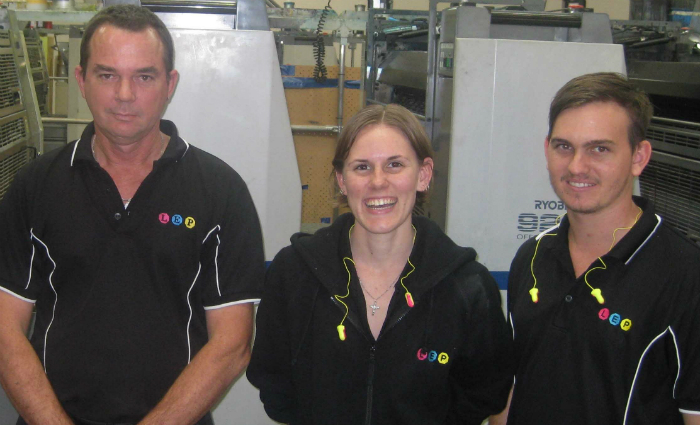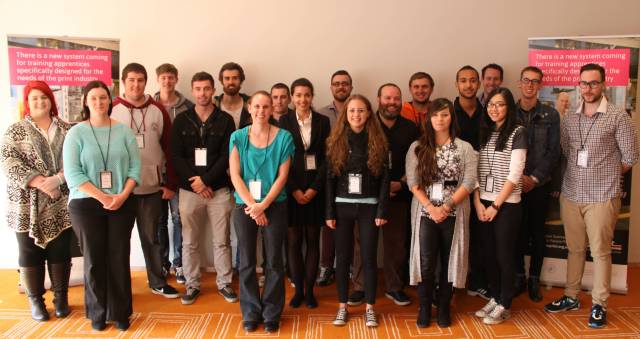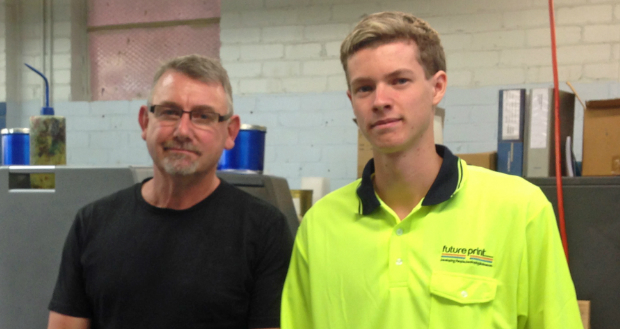
More than 150 apprentices are now on printing floors around Australia training through the Future Print programme, with many more expected in the near future.
PIAA general manager for innovation training and employment Joan Grace, who heads up the programme, says 151 apprentices have started training as of the end of May and 89 businesses have signed up as part of the scheme.
This follows a well ahead of schedule 103 apprentices being on the books on March 20 at 79 businesses. The programme’s goal is to connect apprentices to 250 printers by next July.
“This is a wonderful result because it means we are not only continuing to bring new talent and energy into our industry, but businesses and employees are taking advantage of the opportunity to broaden and deepen their skill base to help meet the requirements of a rapidly changing industry,” Grace says.
[Related: More Future Print news]
Brisbane-based trade printer LEP Colour Printers is one company getting in on the programme, hiring two new apprentices in April through Future Print’s job board, which has 34 vacancies. LEP is already seeing the benefits.
LEP chief executive John Bromfield says employing apprentices not only improves the company’s production capabilities and productivity, but also provides a solid skills base for the future.
“We can already see the benefits of employing apprentices on our floor, but the real benefits will be obvious in coming years as they build their skills and become invaluable members of our team here at LEP,” he says.
“As we grow we will certainly be taking on more apprentices here.”
Kirstin Robinson and Brendan Prickett are training as print finishers at LEP and say they are happy to have taken the positions.
Robinson says: “I’m looking forward to finishing my apprenticeship and building a career in the print industry here at LEP, which is a great company to work for.”
Prickett says: “This has been a real eye-opener for me. Now that I’ve seen what is involved in the print production I’m keen to learn more and maybe start my own print business eventually.”
LEP general manager Rob Walters says he likes the Future Print competency-based model over traditional time-based ones because it gives employers like LEP direct input into how the benchmarks are set.
"It makes sure training stays relevant to our needs," he says.
"These two have hit the ground running and are integrating into the business well. We like the enthusiasm new blood brings to our company.
"We want them to be able to grow with the business and stay with us for a long time, like many of our other staff."
The new arrivals join third year LEP apprentice Nathan Callanan, who is qualifying for his Certificate III in Printing and Graphic Arts (Printing).
“Like most people, I wasn’t aware at how big and widely varied the printing industry is. Coming from a factory hand background, and after seeing the job opportunity and potential apprenticeship in a printing factory, I did some research and applied,” Callanan says.
“It has taught me the value in starting from the bottom and working your way up, and also proper time management, due to working such a busy and very demanding job. The lean manufacturing course has also helped me.”
[Related: More training news]
Grace says she has recently held meetings in several state precincts, commenced data collection for the first phase of evaluations and secured the extension of funding for the PIAA mentoring service until July 215.
“Perhaps one of the most common pieces of feedback from employers and apprentices through the projects over these past few months is the appreciation they have for the assistance and advice from their Future Print Advisors and mentors so we are delighted to have some certainty around this extension for the next 12 months,” she says.
Future Print will also hold the first Apprenticeship Summit in September, inviting stakeholders including people from the PIAA and the Australian Manufacturing Workers Union, members of the steering committee, representatives from registered training organisations, Future Print Advisors, and employers and apprentices, to provide their input on the future of the programme.
“This will be a vital opportunity to share ideas and provide feedback with others involved in different aspects of the programme, so that we can evaluate how we are travelling so far and make sure we are setting the right course for the future,” Grace says.
She says the National Workforce Development Fund project will also soon be launched soon, which will provide additional advice and resources to businesses.
Comment below to have your say on this story.
If you have a news story or tip-off, get in touch at editorial@sprinter.com.au.
Sign up to the Sprinter newsletter



